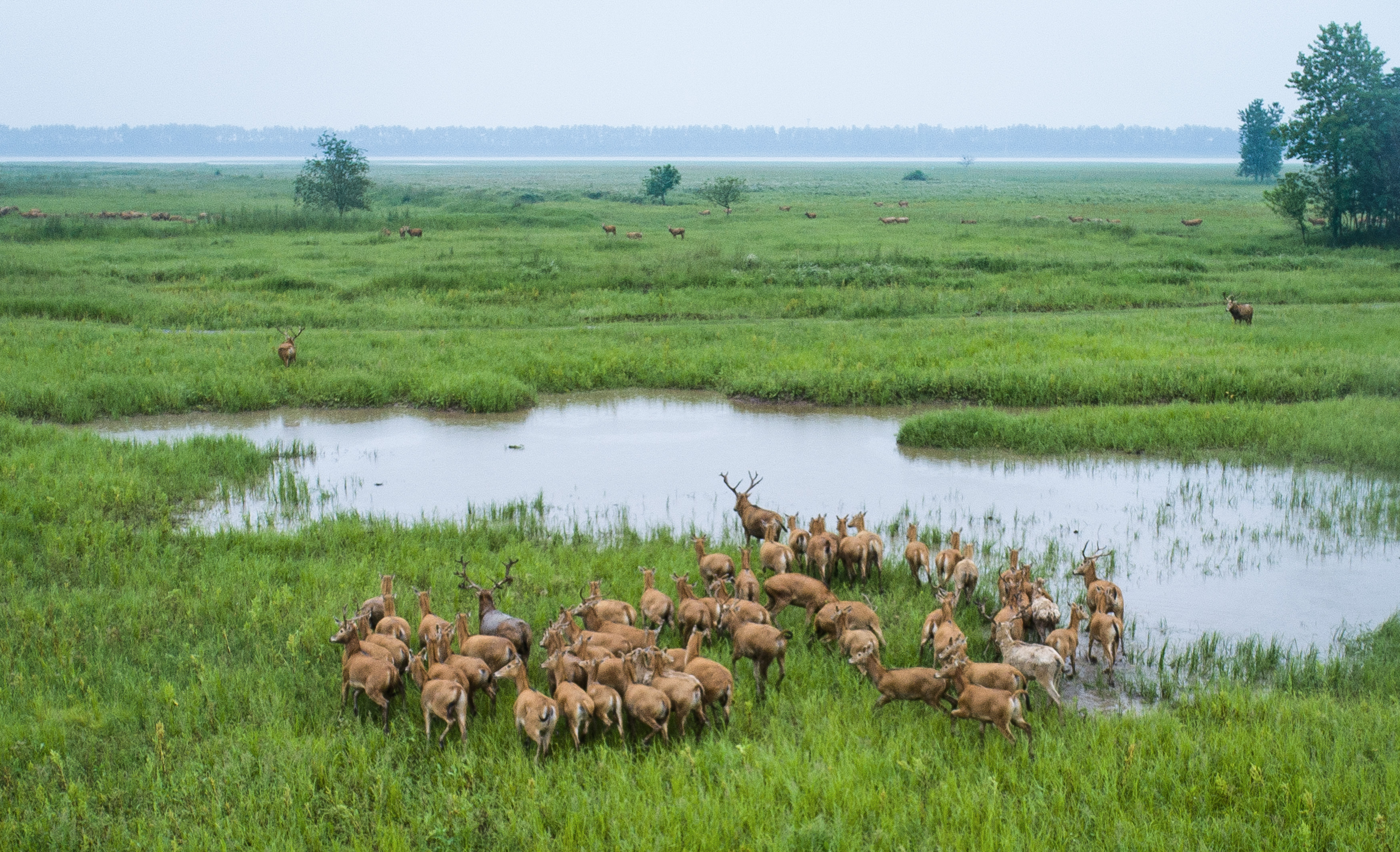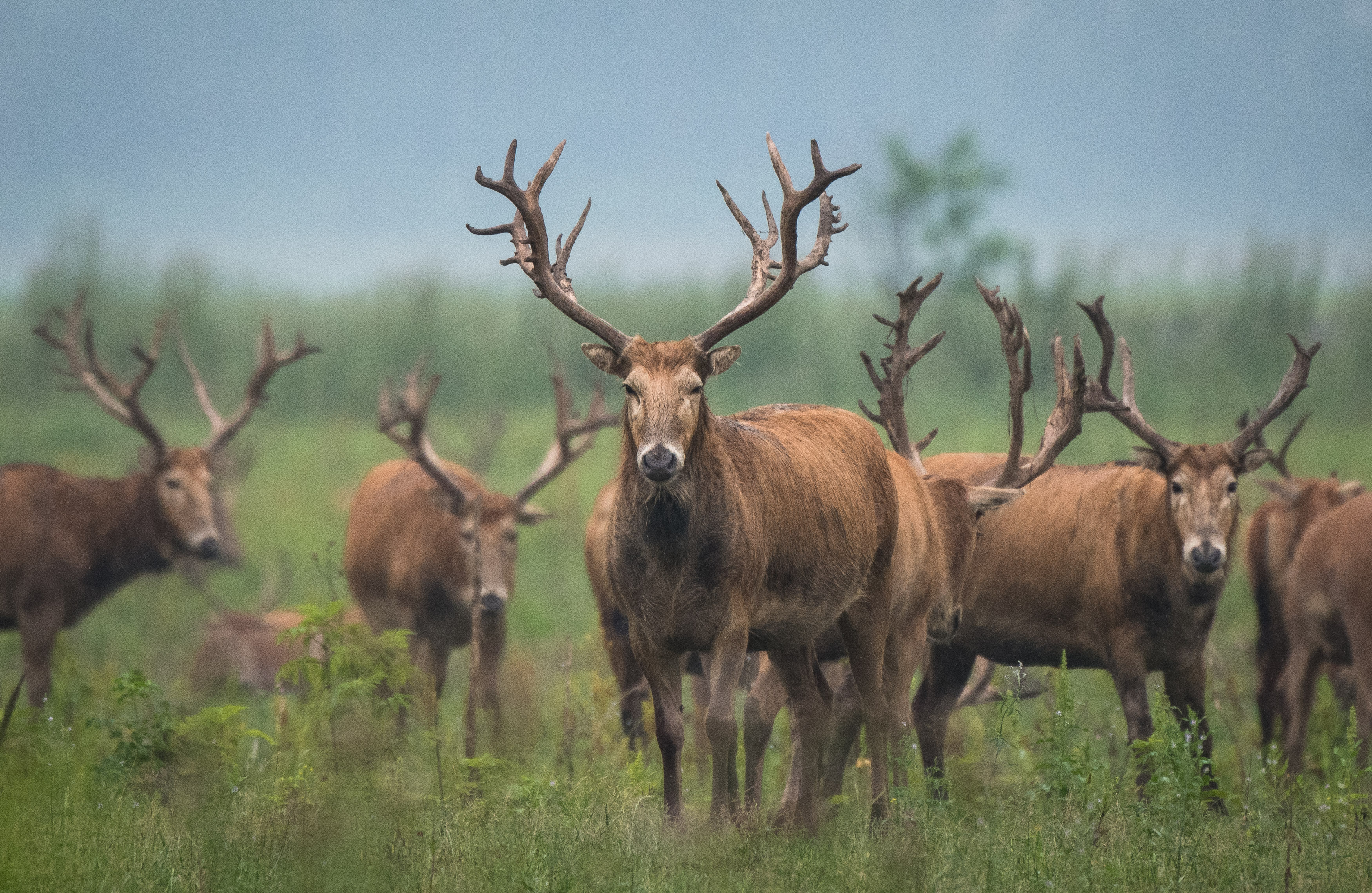Milu Deer Survive Against All Odds
A herd of Milu at the national reserve in Shishou, Hubei province. (PHOTO: XINHUA)
By WANG Xiaoxia
Milu, also known as Père David's deer or Elaphurus davidianus, is a species of deer native to China as well as the only extant member of the genus Elaphurus.
It is no ordinary deer, as it has giant antlers on its horse-shaped head, a donkey's tail, and hooves like a cow, but with webbing between the toes for swimming.
What is more extraordinary is its odyssey from the West. The deer went extinct in China over a century ago, but a small number had fortunately been saved on a British duke's estate. Now, it is back home in China and adding a new chapter to its incredible story.
Elizabeth Maruma Mrema, executive secretary of the United Nations Convention on Biological Diversity, hailed the protection work on Milu in China as it provides a reference for the protection of other endangered species worldwide.
Ancient Chinese species
As one of the most ancient species in China, Milu dates back to around two million years ago, and its population peaked at more than 100 million about 2000 years ago. Feeding mainly on grasses and aquatic plants, most of them lived in the basin areas of the Yangtze River and Yellow River.
Milu, whose antlers fall off in winter and grow again in spring, is regarded as an auspicious animal with cultural imagery reflecting life and hope in Chinese tradition.
Therefore, the animal gained the affection of the Chinese people, including royal family members, and became a popular quarry to hunt. Due to years of overhunting and the loss of its natural habitat, by the end of 19th century, only a small number of Milu lived in captivity in the emperor's private garden.
In 1865, when French missionary Père (Father) David saw Milu at the Nanhaizi royal garden in suburban Beijing, he introduced this species to the West. Later, floods and warfare wiped out the entire population in China.
Fortunately, Herbrand Russell, Duke of Bedford, saved the species from extinction by breeding the world's last herd of 18 Milu on his Woburn Abbey estate in Britain. The current population in zoos around the world all stems from the Woburn Abbey herd.
A herd of Milu seen at national nature reserve in Shishou, Hubei. (PHOTO: XINHUA)
Home sweet home
Thanks to the Duke's care, Milu survived World War II and thrived at zoos in many Western countries, with a global population surpassing 1,300 in 1983.
On the other side of the globe, vows for the return of Milu had never ceased. With the unremitting efforts of government, NGOs and the science community, in 1985, China and Britain signed the agreement for the reintroduction of Milu, and the first group of 38 returned to Nanchizi in Beijing, their last habitat in China, after near a century's sojourn. In 1986, another group of 39 deer were reintroduced to the nature reserve in Dafeng, Jiangsu province.
However, the first reintroduction was met with some skepticism. Few people thought the deer would survive, given the small gene pool.
Yet, they defied expectations with a strong survival instinct. As soon as they returned to their native home, their instincts were awakened, said Guo Geng, researcher from Beijing Milu Ecological Research Center.
They used their hooves as tools, kicking open watermelons and flipping fish out of shallow water onto the ground. The deer also have impressive speed and endurance when running and swimming.
Thriving in the wild
Although the deer successfully survived and reproduced in reserves, Chinese scientists did not stop there.
In the 1990s, two national Milu reserves were established in Dafeng, Jiangsu and Shishou, Hubei, to help the Milu survive in the wild.
The deer quickly took to the geographical characteristics of Yangtze basins, where they originated from, surprising people once again.
In 1998, the fence of Shishou reserve was destroyed by floods, and a group of Milu drifted out of the reserve. They survived and formed five communities in the wild.
By the end of 2021, the number of Milu in China had reached more than 10,000, with the wild population surpassing 4,000.
The establishment of national nature reserves has raised awareness on conserving the habitat not only of Milu, but of the ecosystem that supports local communities and rare species.
The rising population of Milu has promoted biodiversity in the reserve, as more than 100 kinds of rare birds have settled there, said Yao Yajun, staff worker from the Dafeng reserve in Jiangsu, adding that in summer he enjoys watching scenes where the birds perch on the backs of Milu eating parasites and getting a free ride across the landscape.




